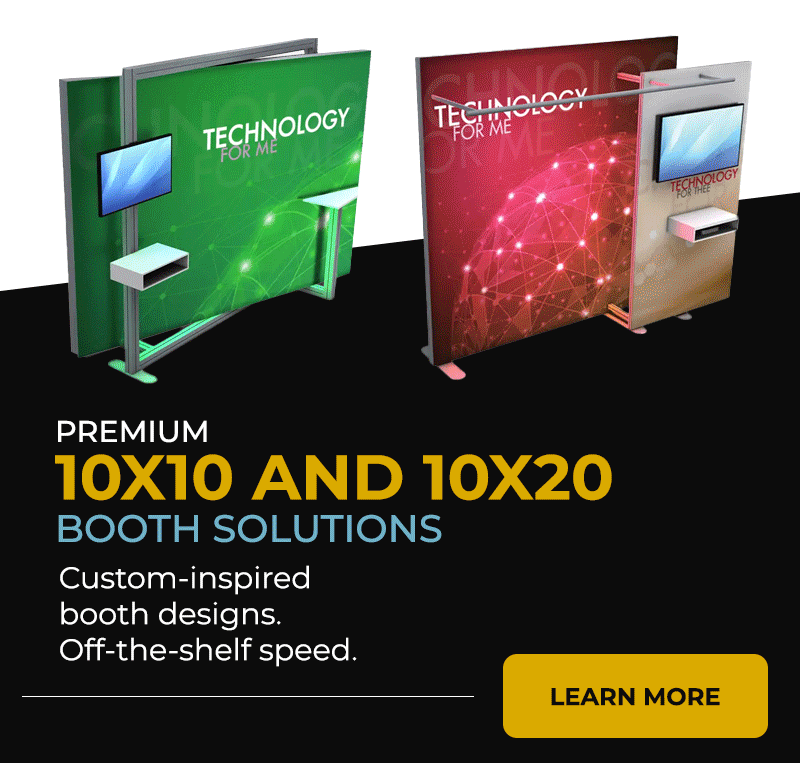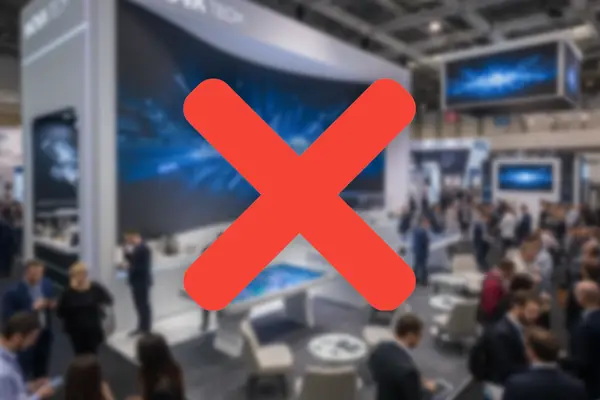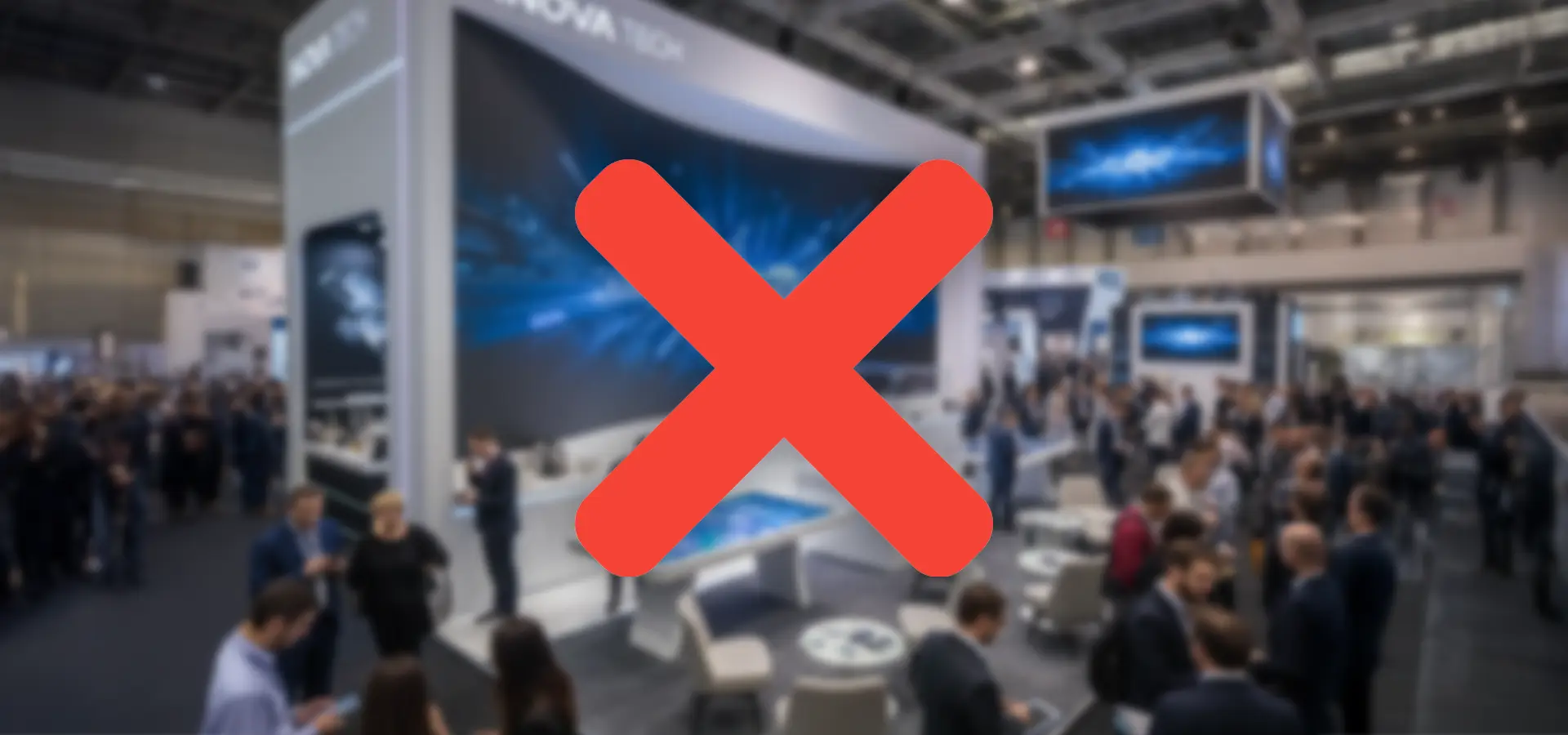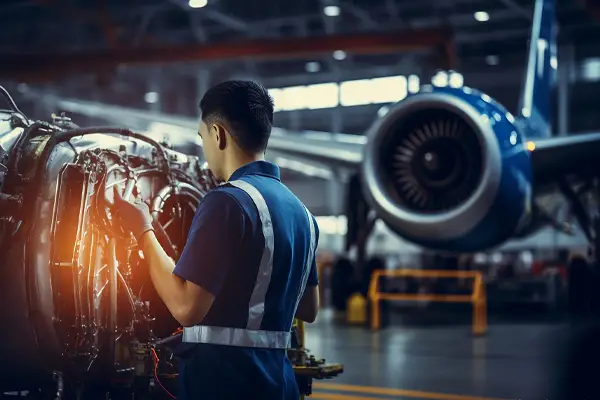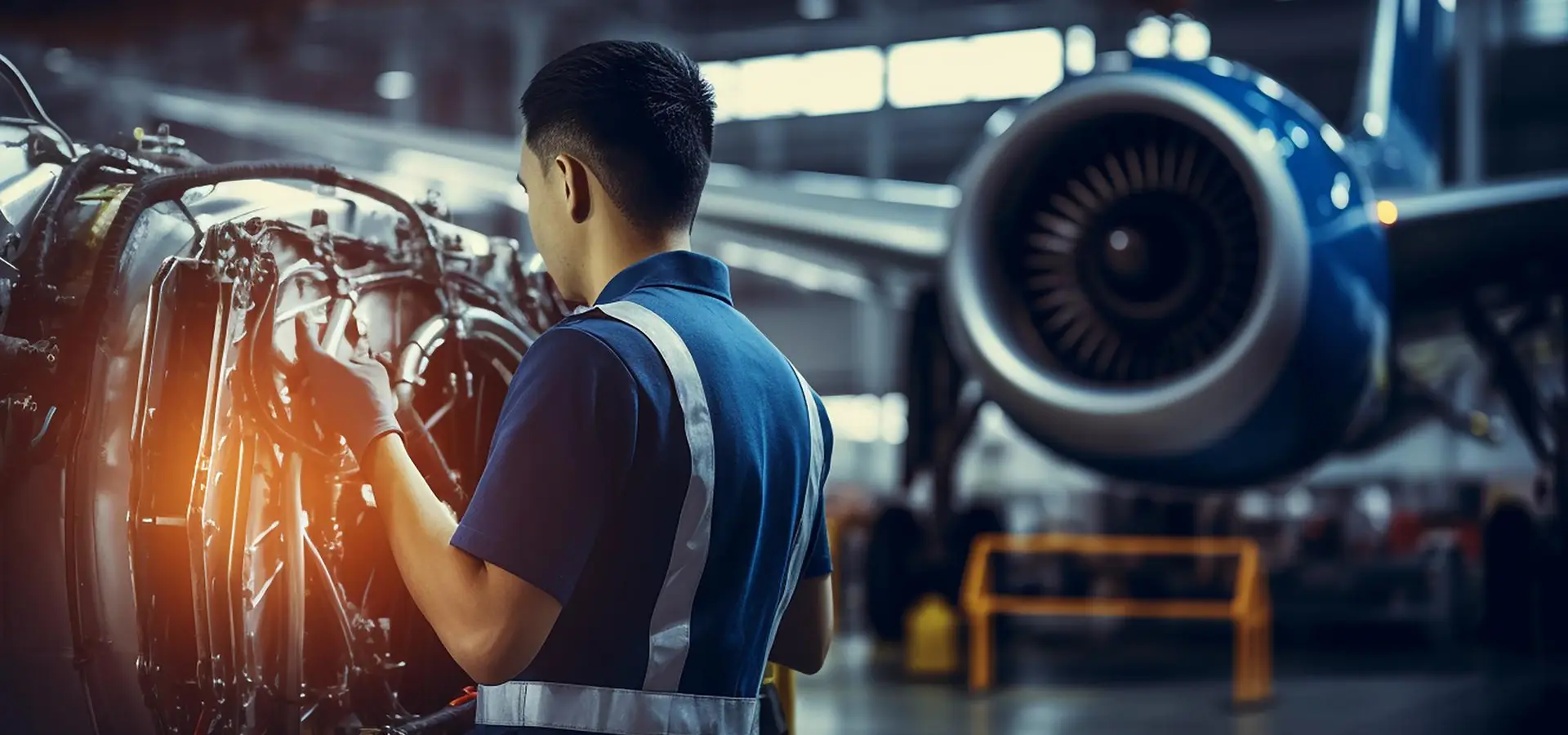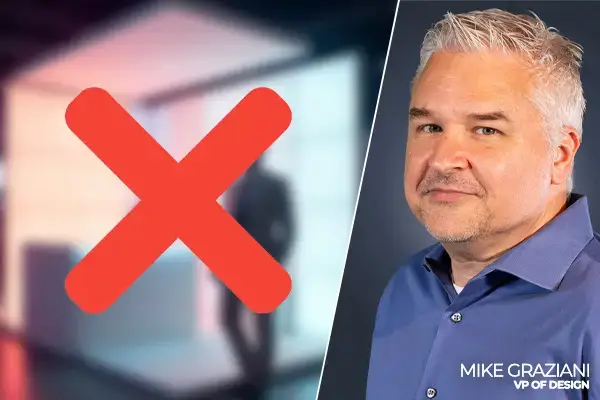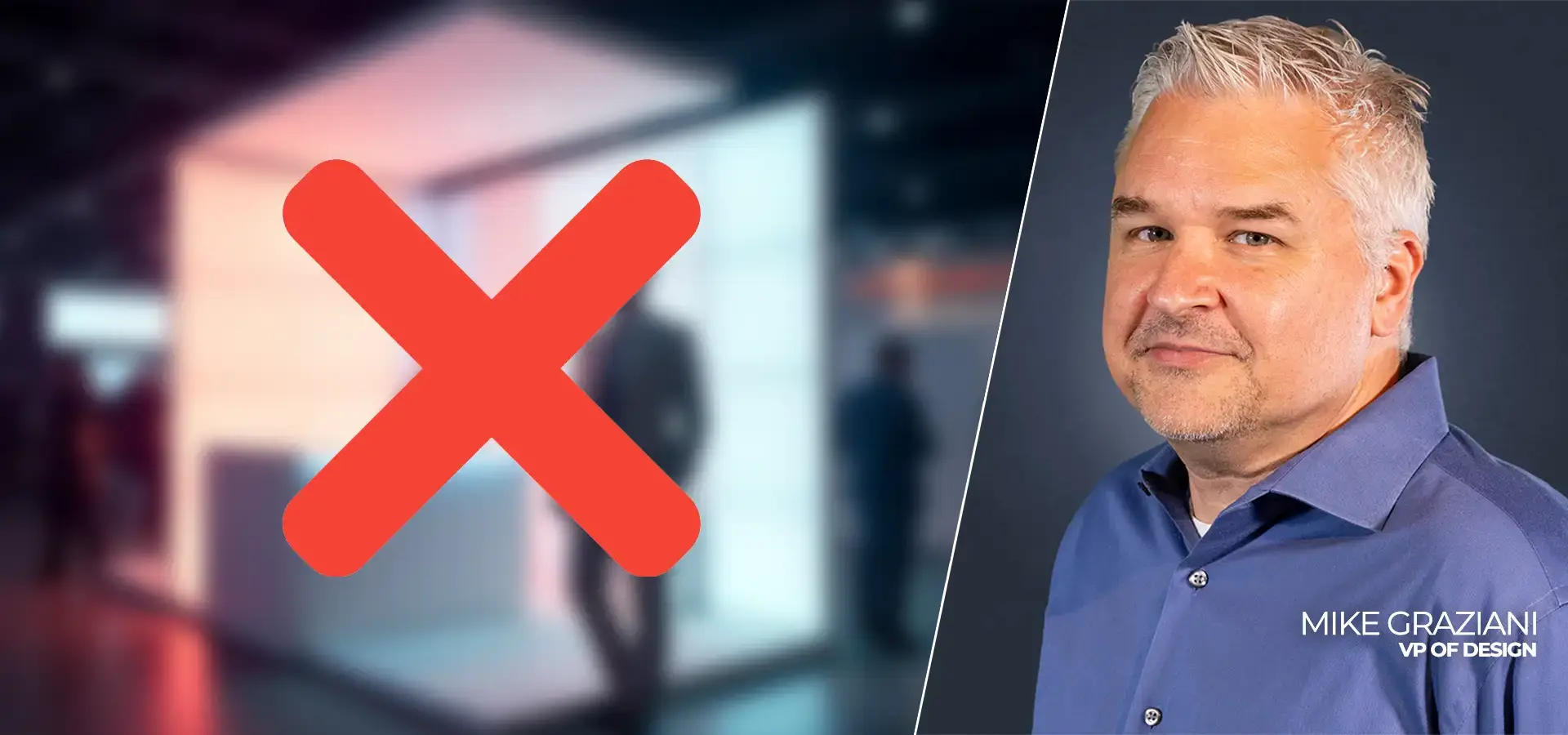Presenting your company in the best possible light at a trade show isn’t cheap. It’s a significant investment in gaining high-quality leads and referrals.
When you’re making this investment, the last thing you want is to add unnecessary further expenditure.
Some costs are unavoidable, but it’s the hidden costs that get you—and trust us when we say that these hidden costs can really add up. As a seasoned, strategic trade show partner, we should know.
We identify five hidden costs associated with trade shows and give you tips on how to control them so that you don’t spend way more money than you need to.
1. Drayage
Most exhibitors may have heard the term drayage or are loosely aware of what it means. What they may not know is what a drayage rate covers, or how much drayage costs.
Your drayage rate accounts for:
- The handling of your booth materials.
- The transportation of these materials from the loading dock to your booth space and back again.
This rate is calculated using your freight’s hundredweight (CWT). In other words, the cost per 100 pounds.
Let’s say you opt for a large, custom trade show booth weighing approximately 3,000 lbs. Your CWT is 30 (3,000 / 100). In addition, you can typically expect to pay $60-160 per CWT as a rule of thumb. Ranges of $200–$400 per 100 lbs aren’t unusual in cities such as New York or Chicago.
If we use $110 per CWT for this example, your drayage cost would be:
30 (CWT) x $110 (cost per CWT) = $3,300
However, there are plenty of other drayage-associated fees to be mindful of, some of which are avoidable, such as demurrage, detention, and rush handling fees. These costs could spiral out of control if you’re not careful.
The name of the game is to get your materials to the venue as quickly and safely as possible in a cost-effective manner.
Here are some tips on how to achieve this:
- Check the drayage charge with the venue before the show.
- Ship all of your materials in one go rather than via separate shipments. This will reduce handling complexity and surcharges.
- Ship fewer, lighter crates.
- Opt for lightweight show materials such as tension fabric, aluminum, and corrugated cardboard.
- Ship in advance to the show’s official warehouse to avoid rush handling fees.
- Schedule your drayage services well in advance to minimize detention fees.
2. Utilities
Utilities are an essential cost at a trade show, but—as with every cost listed in this article—they can significantly inflate your budget beyond your initial expectations.
Depending on your power and bandwidth requirements, you could be quoted thousands of dollars for utilities.
Electricity costs at a trade show are calculated in kilowatt-hours (kWh). For reference, a laptop typically uses around 65 watts, while large TVs (i.e., TVs that are 50” and above) use between 100 and 300 watts. Add lighting to the equation, and you could be looking at another 100 to 200 watts.
If you’re planning to integrate digital and interactive features in your booth, such as LED video walls, kinetic video tiles, or a workstation featuring translucent video screens, you need to factor in how much these features will cost—not just in terms of electricity, but also labor, i.e., set up and installation.
You can also check with the venue how they charge for WiFi. Is it by number of users or devices? Type of connectivity? Bandwidth requirements?
By doing the above, you’ll build a very clear picture of your projected electricity and WiFi costs and can decide which adjustments you may need to make to your booth.
It’s also worth noting that most trade shows have an ‘early bird’ pricing structure for electrics. If you place an electrical order before a specific deadline, you can make significant savings on your utility costs. If you miss this deadline, you'll likely be charged a "standard price," which can be up to 20% higher.
Furthermore, water, plumbing, and compressed air are other hidden costs that could creep up on you if you haven’t taken them into consideration. These are typically charged as separate utilities and incur additional setup fees.
So, again, it’s worth requesting an itemized utility estimate from the venue or general services contractor before finalizing your booth plan so you know exactly what you’re paying and can make necessary adjustments.
3. Labor
Labor isn’t a ‘hidden’ cost in its own right, as any exhibitor knows it’s going to come into the equation at some point.
However, there are certain ‘lesser-known’ labor costs you may not have taken into account before getting your booth designed and fabricated.
Let’s start with the basics.
The setup, installation, and dismantling of your booth require official venue staff or union labor, and this labor is typically billed hourly.
If you opt for a custom trade show booth, it becomes a little more complex.
Getting this set up at the venue will require specialized labor at an additional cost, depending on the components, materials, and overall construction. For instance, you may need the services of AV technicians, electricians, or carpenters.
There may also be weekend, holiday, or after-hours work involved, and this will come with additional surcharges—sometimes as much as double what you’d normally pay.
On that note, it’s worth remembering that labor costs can vary by city. Some cities are more unionized than others, meaning they'll charge double time for after-hours work versus other cities that just charge overtime.
That’s why it’s important to research the location of your next trade show and project what your labor costs are likely to be.
If the costs far exceed your budget, you can look to schedule installation and dismantling within standard timeframes ahead of time.
You could also streamline your labor costs by:
- Submitting build drawings to avoid idle time and potential delays.
- Pre-labelling booth parts to help your I&D crew hit the ground running and ensure a more coordinated approach.
- Opting for a modular booth made from interchangeable components which is easier to assemble and dismantle than a custom booth.
4. Cleaning and porter services
This is another in-show cost that can easily fall under the radar.
You’re naturally going to be more preoccupied with making your booth into an absorbing, storytelling asset than thinking about how you’ll keep the booth space clean.
But, as we know, first impressions are everything, and services like trash removal, vacuuming, and waste segregation are vital in attracting and retaining booth traffic.
These services tend to be charged separately from booth rental or utilities and can amount to hundreds of dollars across several days.
Let’s say you’re at a show for four days.
You’re taking a 20ftx20ft exhibit and you’re paying $0.40 per square foot per day for services such as vacuuming.
This is $640 across four days.
If you plan on taking a larger booth to your next trade show, i.e., a 20x40ft exhibit, this would work out at double, at $1,280.
Of course, this is just a hypothetical example.
This figure isn’t factoring in basic porter services, such as trash removal, which are typically billed per hour. It also doesn’t include after-hours cleaning and recycling, which usually carry separate one-off or nightly fees. Some venues will bundle these costs into “premium service” packages.
Some events also charge extra for handling recyclables if they’re not sorted correctly, and for debris and spill cleanup.
Throw these costs into the mix, and you’re potentially paying well into the thousands of dollars.
Depending on the specific show and how porter services are charged, you may end up paying per day or per hour, in which case the overall cost will vary.
That’s why you should contact the venue in advance to find out how porter services are billed.
You should also request a detailed cleaning and waste management quote prior to the event if you're able to obtain one.
Here are some final tips:
- Segregate recyclables and general waste to reduce disposal fees.
- Have someone from your organization on hand to ensure consistent tidiness and minimize extra labor charges for debris or spill cleanup.
- Look for “venue service packages” that bundle cleaning, waste, water, and hygiene together. This way, you know exactly how much you’re paying.
Again, if you’re not sure how to approach any of the above, speak to your trade show partner and they’ll guide you in the right direction.
5. Marketing and promotional expenses
We’re all for a solid marketing plan and lead generation strategy. Marketing is a cornerstone of our business.
However, you can easily gobble up a big chunk of your trade show budget on marketing and promotional expenses, some of which you may either not need or may not have the time to utilize fully.
The most common marketing and promotional expenses for trade show exhibitors include:
- Digital ads
- Email campaigns
- Brochures
- Branded giveaways
- Banners
- Lead retrieval systems
We have two simple tips on how to control your marketing and promotional costs.
Firstly, be discerning as to what you do and don’t need (‘need’ being the operative word).
Do you need to spend hundreds of dollars on branded giveaways when they may just get thrown in the trash, and would this money be better spent on a lead retrieval system that allows you to better understand your ideal customers?
Do you need to spend thousands of dollars on digital ads when you could spend this money on your booth design?
These aren’t rhetorical questions—we’re simply playing devil’s advocate.
The second tip is to choose who you work with carefully if you’re planning to outsource your marketing ahead of the show.
You may have an ongoing contract with a marketing agency that’s delivered great work for you already, in which case, read past this part.
But if you’re relatively new to the exhibiting game and/or have a limited knowledge of what ‘good’ marketing looks like, you should spend time doing research and reading client reviews. Otherwise, you could end up handing large sums of cash to the wrong agency.
A good marketing company will ask you a ton of questions about your sales goals, ideal audience, competitors, brand identity, pain points you solve, and much, much more. They’ll then come up with a bespoke strategy to suit your goals, and this strategy will generate consistent, qualified leads.
A bad marketing company will take your money, give you a ‘catch-all’ strategy, and fail to generate a strong return on your investment.
If you want to avoid wasting huge sums of money with the latter, doing your homework and asking the right questions is critical. We know some great agencies, so you can speak to us if you need further guidance.
Gain total transparency over costs by partnering with The Trade Group
As a seasoned, strategic trade show partner that’s been in the game since 1986, we know which costs are essential and which are avoidable.
We have the insights and lived experience to help you streamline your trade show costs and achieve maximum return on investment.
We’ll also give you a trade show exhibit that brings your business to life in ways you can’t imagine and cuts through the noise of the trade show floor.
If you’re interested in partnering with us, send us a note here or give us a call at 800-343-2005 to get the ball rolling.


